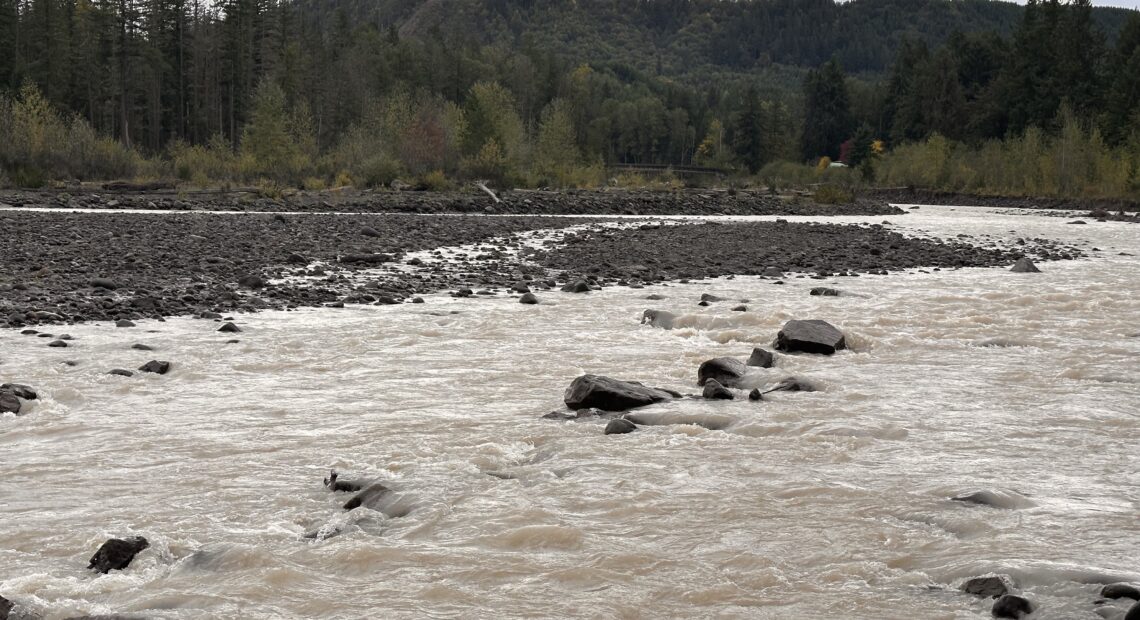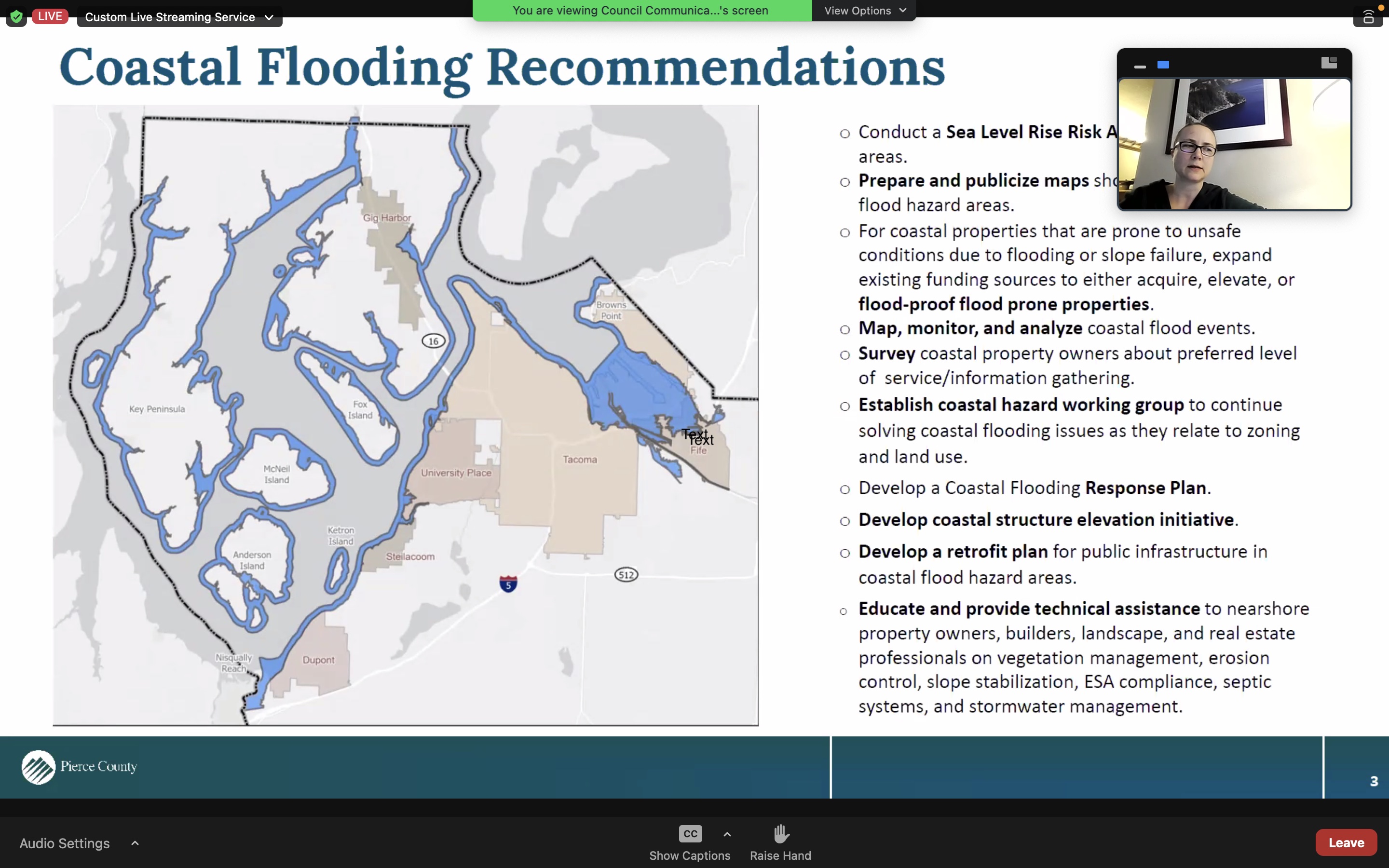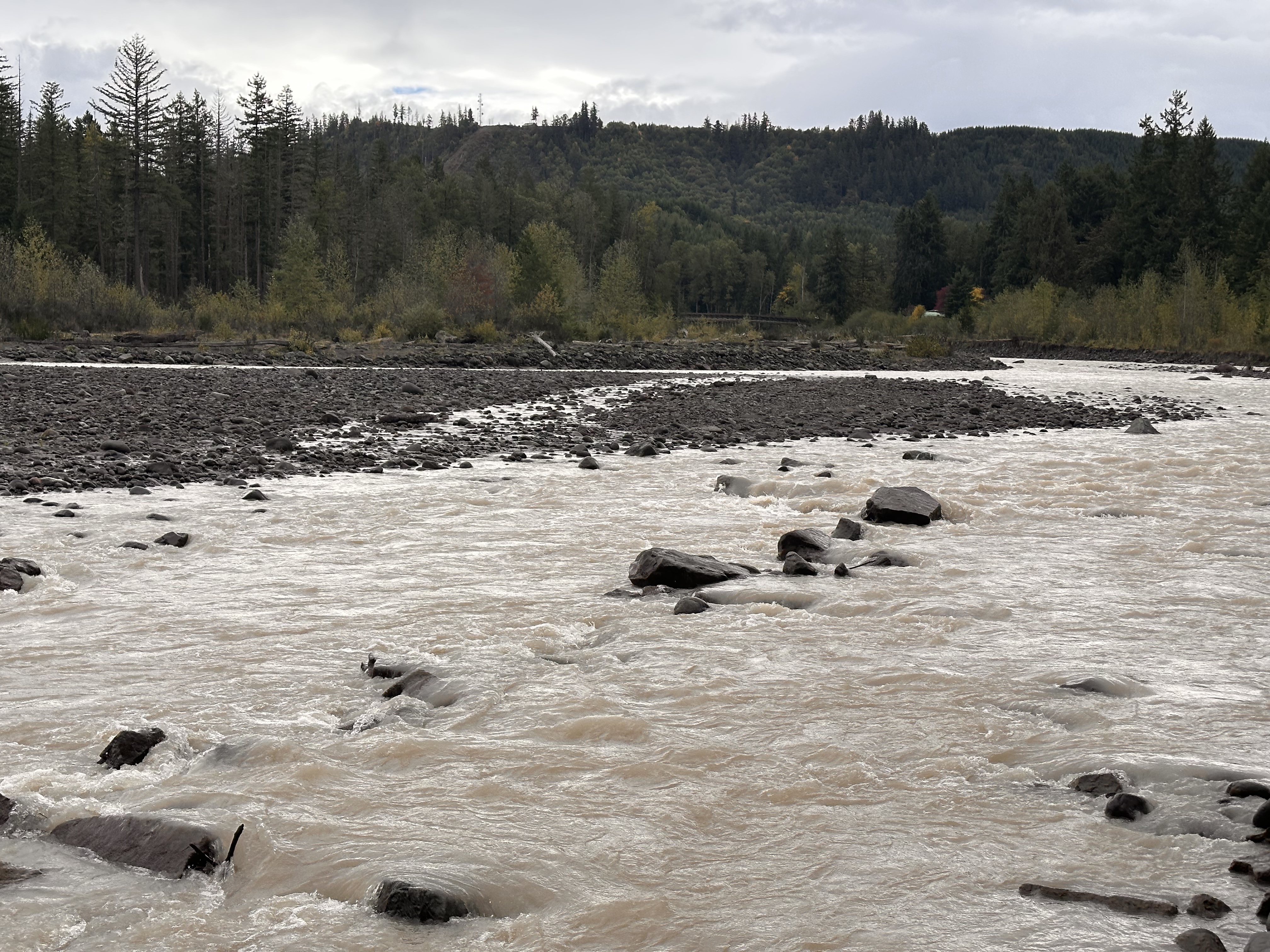
New flood management plan considers more flooding types
Listen
(Runtime 1:01)
Read
After about five years in the works, the Pierce County Council adopted a new Comprehensive Flood Hazard Management Plan that broadens the scope of what kinds of flooding the county will plan for – from coastal to urban flooding.
Angela Angove is the floodplain and watershed services manager with Pierce County Planning and Public Works. She said different types of flooding are top of mind for people in the county, recalling the King Tides that caused tidal flooding last December.
“We know that those hazards exist throughout the county, but they were never really addressed in our flood planning process,” Angove said.
Pierce County is no stranger to floods. Since 1994 when the county first adopted a comprehensive plan for flood risk management, the county has experienced 30 major flood events, Angove said.
“I think the issue of coastal flooding is something that a lot of us have had trouble wrapping our heads around, like how, ‘How can you hold back the ocean? How are we going to address this?’ And, so, thank you for taking this on,” said Councilmember Robyn Denson. Denson represents District 7, which is mostly surrounded by Puget Sound.

During the Oct. 17, Pierce County Council meeting, Greta Holmstrom, Pierce County Senior Planner presented responses to outstanding questions about the flood plan. (Credit: Lauren Gallup, screenshot / NWPB)
Pierce County is diverse; From the shores of Puget Sound to the heights of Mount Rainier, the kinds of flooding and watersheds vary greatly here.
“We’re dealing with increasingly more difficult riverine and mountain-oriented flooding. At the same time, while that’s coming down faster, we’re seeing coastal flooding with rising sea levels,” said Councilmember Marty Campbell, District 5. “And so we’re caught in between.”
To develop the plan, staff did outreach in multiple jurisdictions.
“If it floods in Puyallup and Fife, it’s also flooding in unincorporated Pierce County on the Puyallup River,” said Krystal Kyer, a floodplain planner for Pierce County Planning and Public Works.
There is no funding tied to the plan. If projects move forward, funding would come from the Capital Facilities Plan. It also does not set or change land use policy, but instead makes recommendations for the council to consider. Some of those will be studies and reviews to better understand flooding impacts.
The plan is just one requirement for Pierce County to stay a Class 2 community under the Federal Emergency Management Agency’s Community Rating System. That status gives residents and businesses in unincorporated Pierce County 40% off of National Flood Insurance premiums.
















